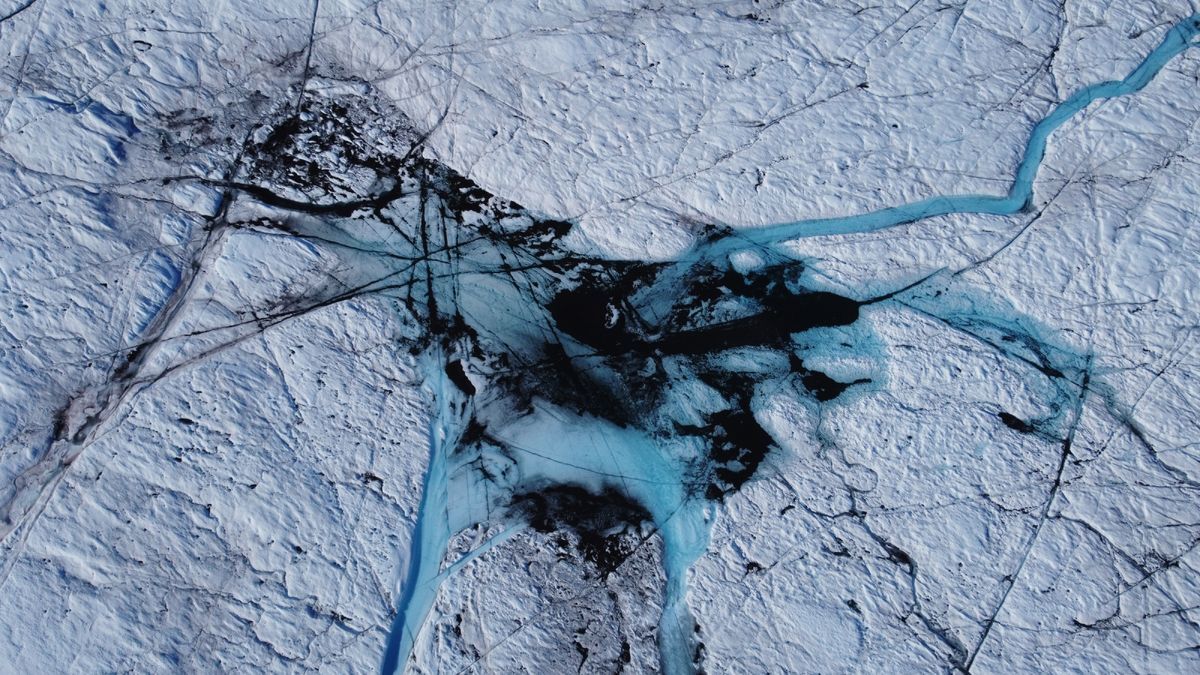- cross-posted to:
- worldnewsnonus@lemy.lol
- cross-posted to:
- worldnewsnonus@lemy.lol
The giant viruses might infect algae that are increasing Greenland’s ice melt. These viruses could help kill off the damaging algal blooms, helping to reduce some of the impacts of climate change.



According to the paper this article is based on, the family of viruses they study, called NCLDV (for NucleoCytoplasmic Large DNA Viruses), are about 1 μm in diameter, which would indeed put them up there with the largest viruses like Pandoravirus or Pithovirus, which are also around the micrometer mark, and I believe are also part of the NCLDV phylum.
Those viruses are about the size of a bacterium. In fact they are so large that they weren’t immediately identified as viruses. Here’s something to give you a sense of the size of common viruses :
However, I don’t know how they come up with that 1500x factor (which doesn’t appear in the source paper), since in size, it’s more like 10x bigger than your average virus (~100nm). Even considering genome size, common viruses genomes are about 10 kb or so, wheras Pandoravirus is the biggest at 2.5Mb. So that would be closer to a 250x factor at best.
For reference, SARS-CoV2 (of COVID-19 fame) is about 100nm in diameter and has a genome size of 30kb.
Does larger in any way mean “less bad”? I’m trying to think of “smaller” things being more likely to be poisonous/venomous in other animals.
Quite scary when you consider their size in relation to the sun and it’s planets. Eldritch looking undead things.
Perhaps the 1500 number is talking about DNA complexity? I’m no virologist, but as I understand it most “normal” viruses have extremely short DNA strands. Perhaps this one is so big because it’s more complex DNA
Nope, I looked at DNA length, that’s what the kb or Mb in my previous post is about. Kb stands for kilobases, each base or nucleotide being one of those A, T, C and G that constitute DNA. Biologists mesure the size of a genome by counting these bases. Average size for a virus is around 10,000 bases or 10kb (sources say 7-20kb) and they don’t get much smaller than 3.5kb.
Interesting. I’m curious of the time period of origin. Would it be possible that we have genetic immunity as part of our ~8% virus DNA?
Nope, sorry. That’s not how immunity works.
I’ve read that they’re investigating the possibility of it helping us fight modern viruses. Why wouldn’t it do the same for the original viruses, assuming they’re part of that 8%?
https://www.nih.gov/news-events/nih-research-matters/ancient-viral-dna-may-help-humans-fight-infections
The article you linked to is about suppressyn, an originally viral protein that’s been integrated in human DNA and is as far as I know only expressed in placenta. There suppressyn helps fight viral infections by competing with some families of viruses for the binding of a membrane receptor (ASCT2) that these viruses use as a way to recognize and attach themselves to target cells.
It seems NCLDV infects unicellular algae and protists, with at least some of the family members relying on phagocytosis by the host, and many of them displaying fibrils on their particles. And though the binding mechanisms probably differ between different viruses of the NCLDV family, I really doubt these host organisms express ASCT2.